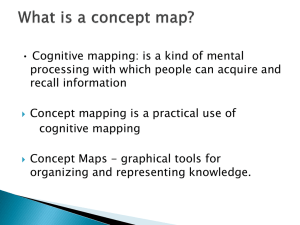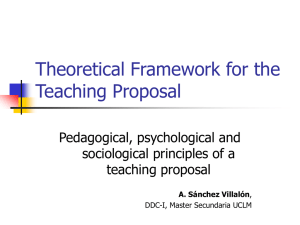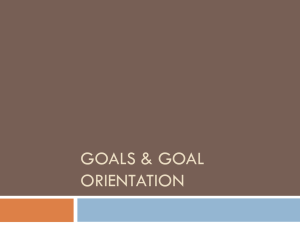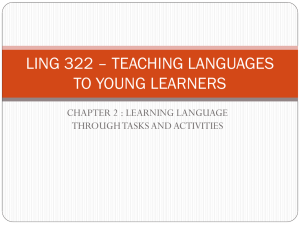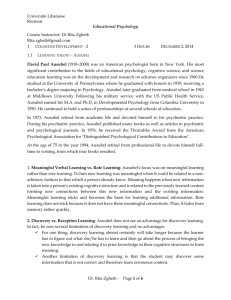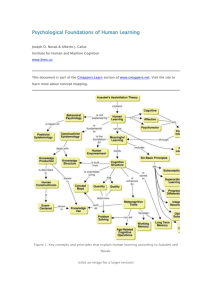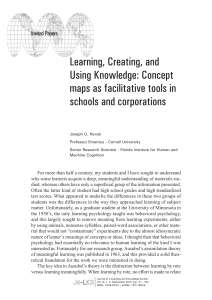How People Learn
advertisement
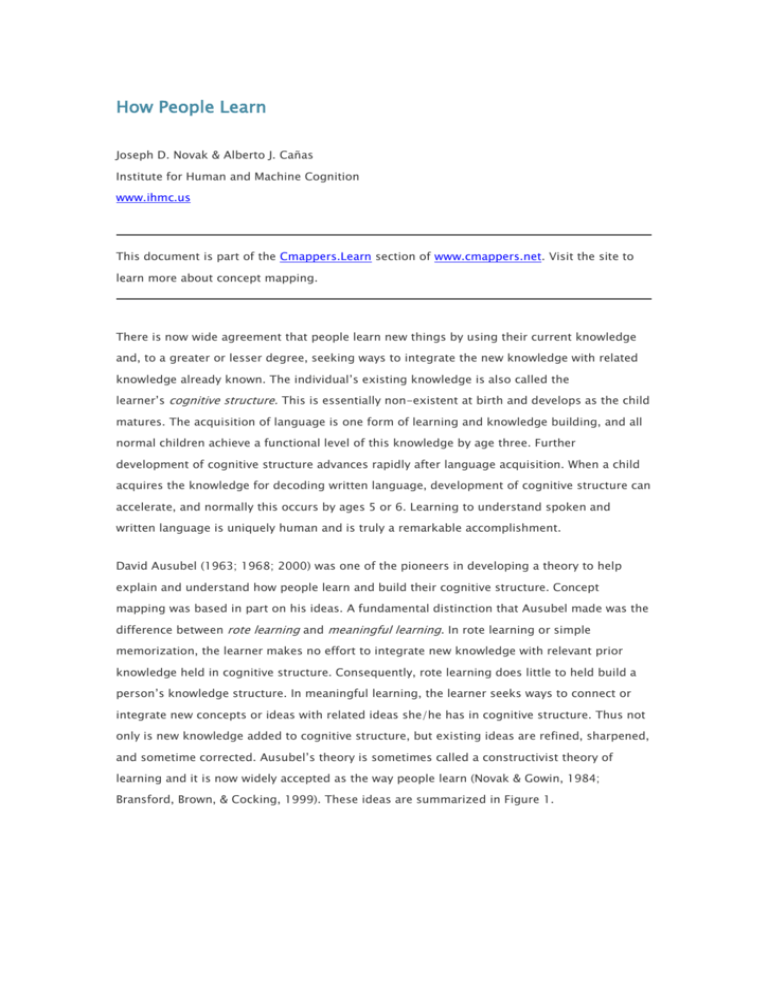
How People Learn Joseph D. Novak & Alberto J. Cañas Institute for Human and Machine Cognition www.ihmc.us This document is part of the Cmappers.Learn section of www.cmappers.net. Visit the site to learn more about concept mapping. There is now wide agreement that people learn new things by using their current knowledge and, to a greater or lesser degree, seeking ways to integrate the new knowledge with related knowledge already known. The individual’s existing knowledge is also called the learner’s cognitive structure. This is essentially non-existent at birth and develops as the child matures. The acquisition of language is one form of learning and knowledge building, and all normal children achieve a functional level of this knowledge by age three. Further development of cognitive structure advances rapidly after language acquisition. When a child acquires the knowledge for decoding written language, development of cognitive structure can accelerate, and normally this occurs by ages 5 or 6. Learning to understand spoken and written language is uniquely human and is truly a remarkable accomplishment. David Ausubel (1963; 1968; 2000) was one of the pioneers in developing a theory to help explain and understand how people learn and build their cognitive structure. Concept mapping was based in part on his ideas. A fundamental distinction that Ausubel made was the difference between rote learning and meaningful learning. In rote learning or simple memorization, the learner makes no effort to integrate new knowledge with relevant prior knowledge held in cognitive structure. Consequently, rote learning does little to held build a person’s knowledge structure. In meaningful learning, the learner seeks ways to connect or integrate new concepts or ideas with related ideas she/he has in cognitive structure. Thus not only is new knowledge added to cognitive structure, but existing ideas are refined, sharpened, and sometime corrected. Ausubel’s theory is sometimes called a constructivist theory of learning and it is now widely accepted as the way people learn (Novak & Gowin, 1984; Bransford, Brown, & Cocking, 1999). These ideas are summarized in Figure 1. Figure 1. Key concepts and propositions regarding learning Concept maps can help learners and teachers by making explicit relevant concepts the learner has in any domain of knowledge. By providing learners with 6-10 key concepts pertinent to a new topic for study and asking students to make a concept map with these concepts, adding others that they deem pertinent, a teacher and the learners can see easily and quickly what they already know, faulty ideas or misconceptions that may interfere with new learning on this topic, and related ideas the learners may have that can help meaningful learning. These initial concept maps can be refined through student team discussion and class discussion. They also can serve as cognitive scaffolds to facilitate new learning, providing an ideational framework that is easy to build upon (Coco, 1999). When pertinent images, text, Web pages or other resources are added to the developing concept map using CmapTools and the Internet by individuals or teams of learners, each can accelerate their learning of the subject. Nothing has more lasting motivation for future learning in a domain than recognized success in meaning building, and concept maps can serve as constructed artifacts that document for the learner and the teacher that significant learning has occurred. Most of the skills people learn require practice of the skill, but understanding the ideas that explain how and why to attain the skill has benefit directly, and indirectly through enhanced motivation. People build their knowledge structures, skills and motivation through meaningful learning. Building concept maps helps people learn how to learn (Novak and Gowin, 1984). References and Further Readings Ausubel, D. P. (1963). The Psychology of Meaningful Verbal Learning. New York: Grune and Stratton. Ausubel, D. P. (1968). Educational Psychology: A Cognitive View. New York: Holt, Rinehart and Winston. Ausubel, D. P. (2000). The Acquisition and Retention of Knowledge: a Cognitive View. Dordrect; Boston: Kluwer Academic Publishers. Bransford, John, Brown, Ann L., & Cocking, Rodney R. (Eds.). (1999). How People Learn: Brain, Mind, Experience, and School. Washington, D.C.: National Academy Press. Cañas, A. J., Hill, G., Carff, R., Suri, N., Lott, J., Eskridge, T., et al. (2004). CmapTools: A Knowledge Modeling and Sharing Environment. In A. J. Cañas, J. D. Novak & F. M. González (Eds.), Concept Maps: Theory, Methodology, Technology. Proceedings of the First International Conference on Concept Mapping (Vol. I, pp. 125-133). Pamplona, Spain: Universidad Pública de Navarra. Coco, C. (1999). Instructional Scaffolding Intervention and Concept Mapping Outcomes among Diverse Learners in a Pre-Service Educational Psychology Course: A Model for Developing Expertise in Writing Expressions of Conceptual Understanding. Novak, J. D., & Gowin, D. B. (1984). Learning How to Learn. New York, NY: Cambridge University Press
